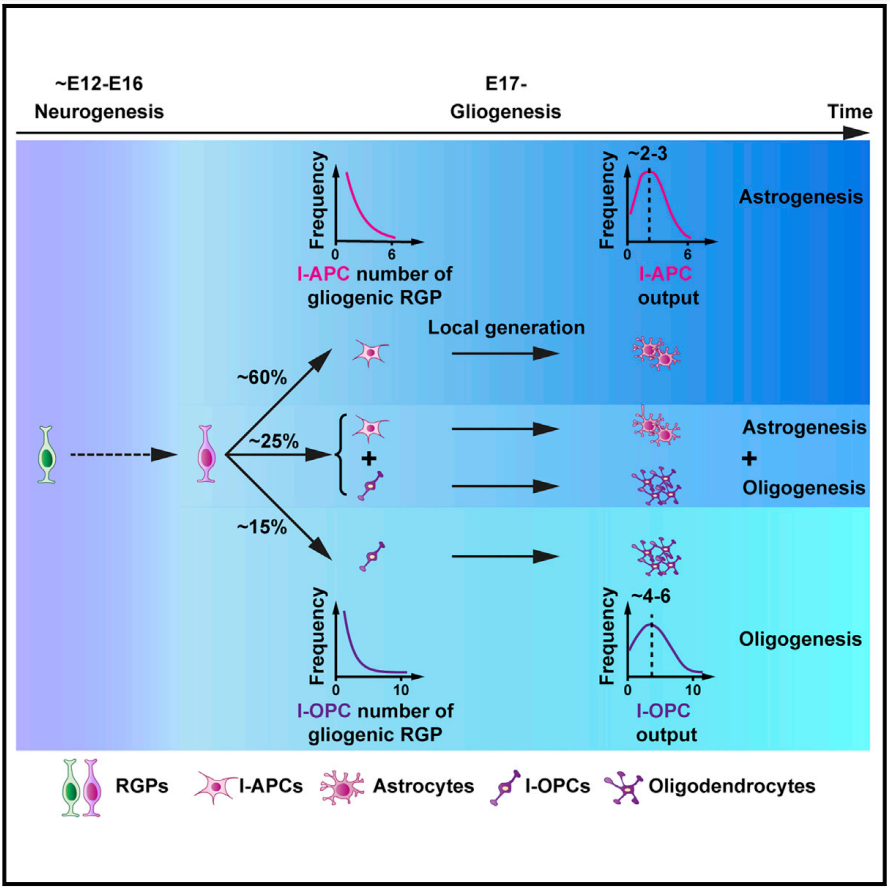On Mar.16, 2021, Song-hai Shi's group published‘Distinct progenitor behavior underlying neocortical gliogenesis related to tumorigenesis’ in Cell Reports.
Highlights
- Dorsal RGPs transition to gliogenesis progressively, with a peak at E16
- Dorsal RGPs exhibit three gliogenic modes with well-defined probabilities
- Intermediate precursors produce the same subtype of glia, forming local clusters
- Clonal NF1 loss selectively enhances gliogenesis, especially the generation of OPCs
Summary
Radial glial progenitors (RGPs) give rise to the vast majority of neurons and glia in the neocortex. Although RGP behavior and progressive generation of neocortical neurons have been delineated, the exact process of neocortical gliogenesis remains elusive. Here, we report the precise progenitor behavior and gliogenesis program at single-cell resolution in the mouse neocortex. Fractions of dorsal RGPs transition from neurogenesis to gliogenesis progressively, producing astrocytes, oligodendrocytes, or both in well-defined propensities of ∼60%, 15%, and 25%, respectively, by fate-restricted “intermediate” precursor cells (IPCs). Although the total number of IPCs generated by individual RGPs appears stochastic, the output of individual IPCs exhibit clear patterns in number and subtype and form discrete local subclusters. Clonal loss of tumor suppressor Neurofibromatosis type 1 leads to excessive production of glia selectively, especially oligodendrocyte precursor cells. These results quantitatively delineate the cellular program of neocortical gliogenesis and suggest the cellular and lineage origin of primary brain tumor.
Graphical abstract

